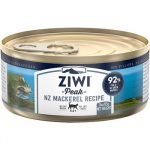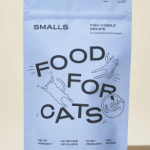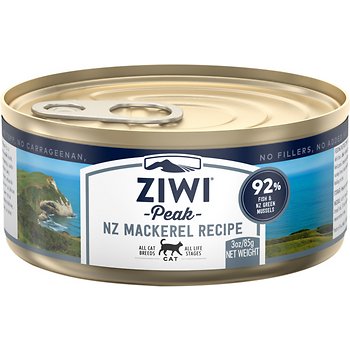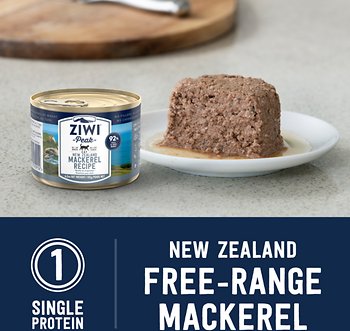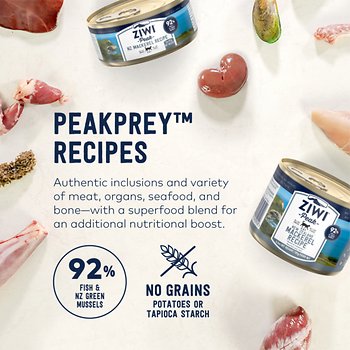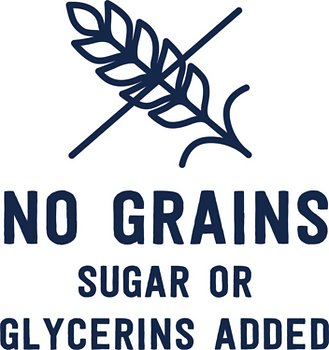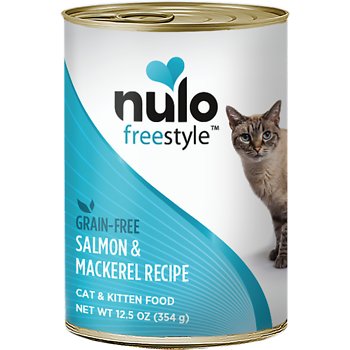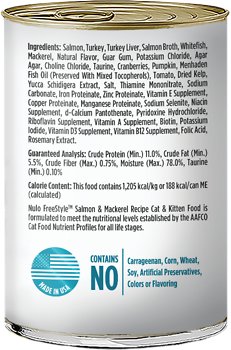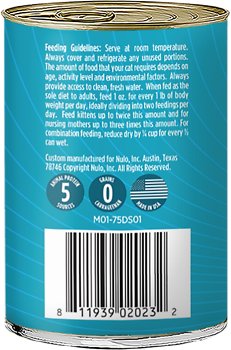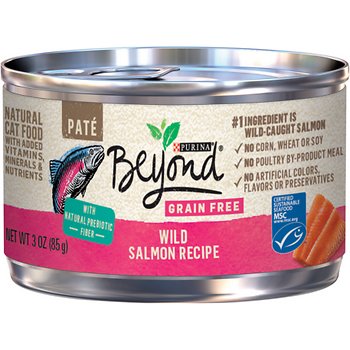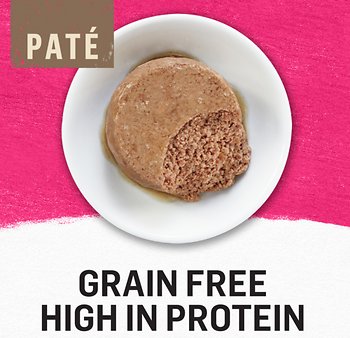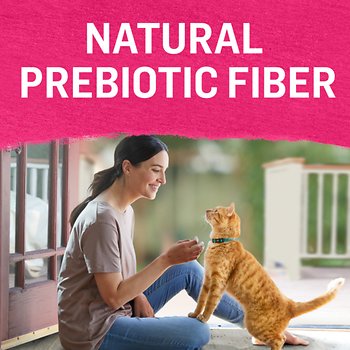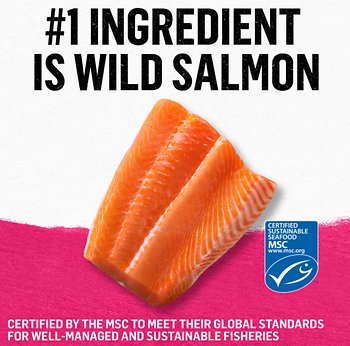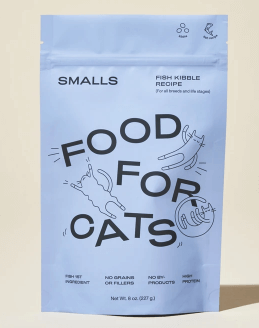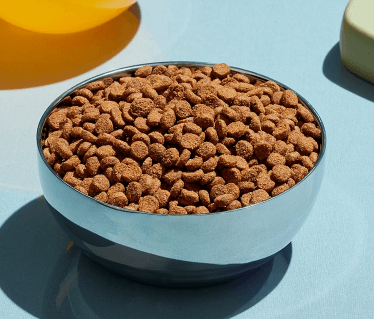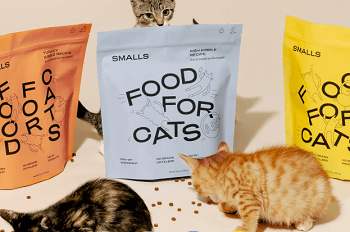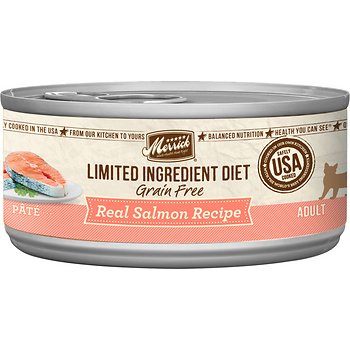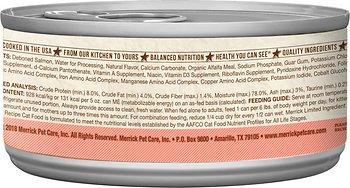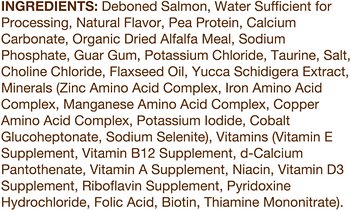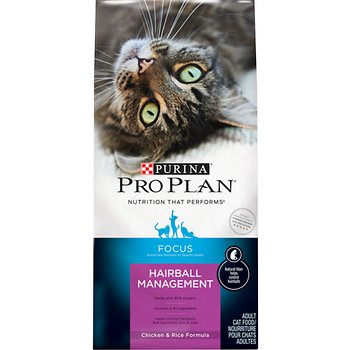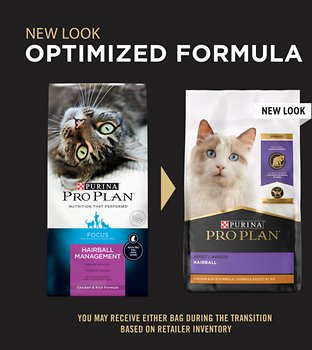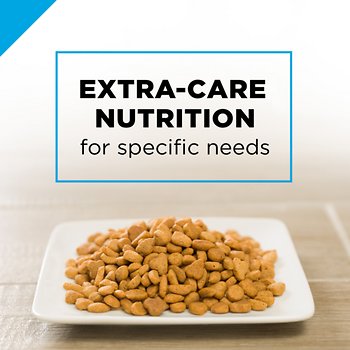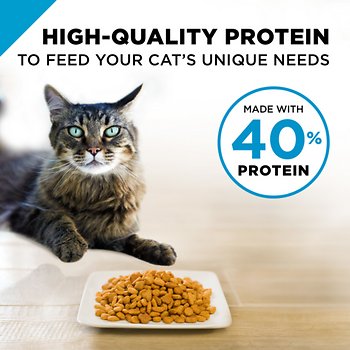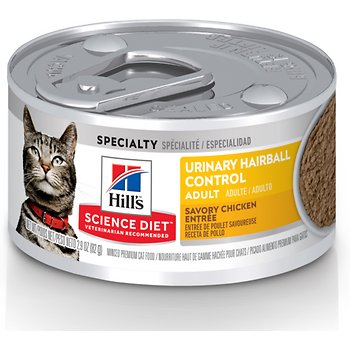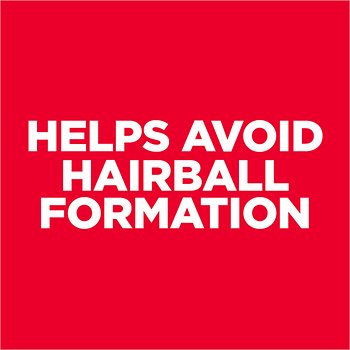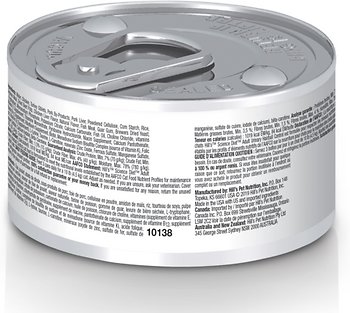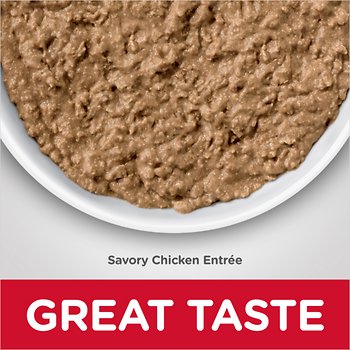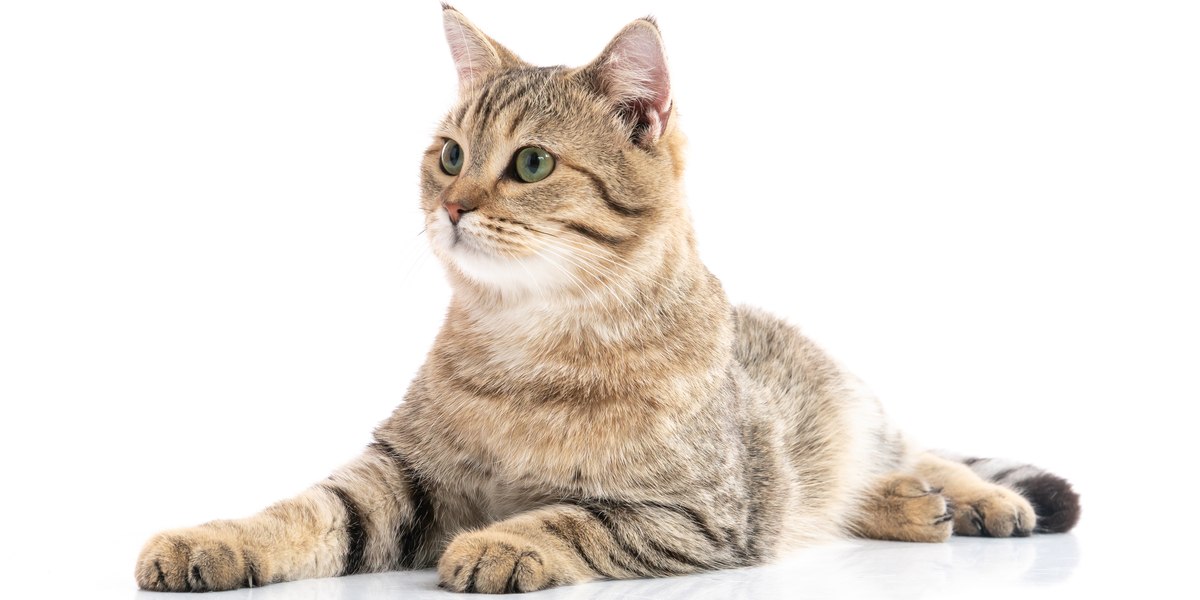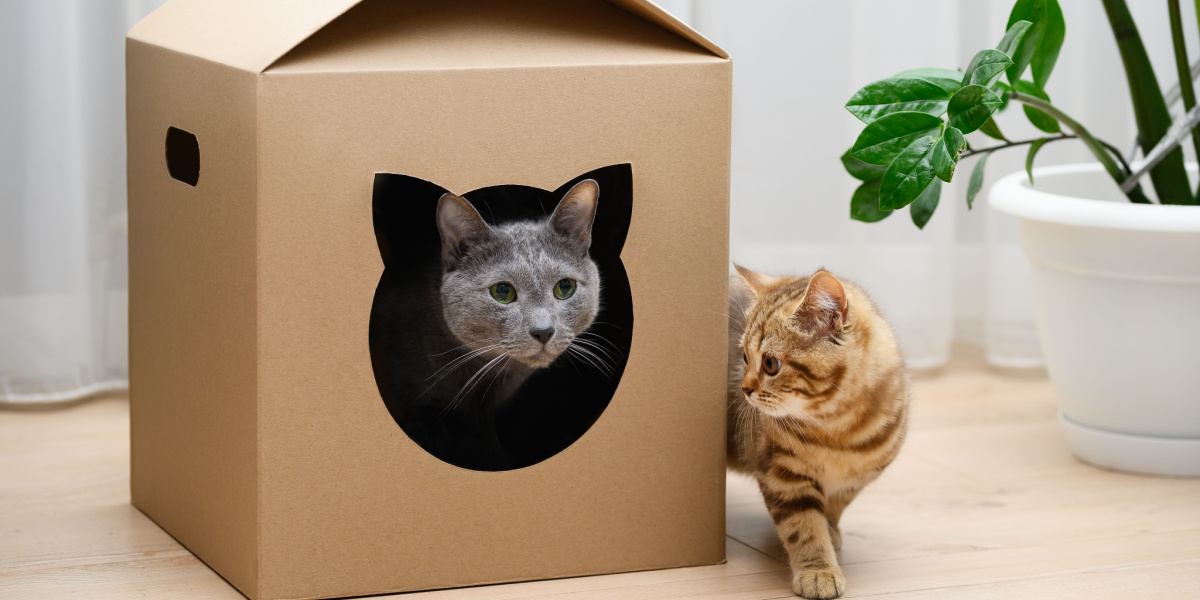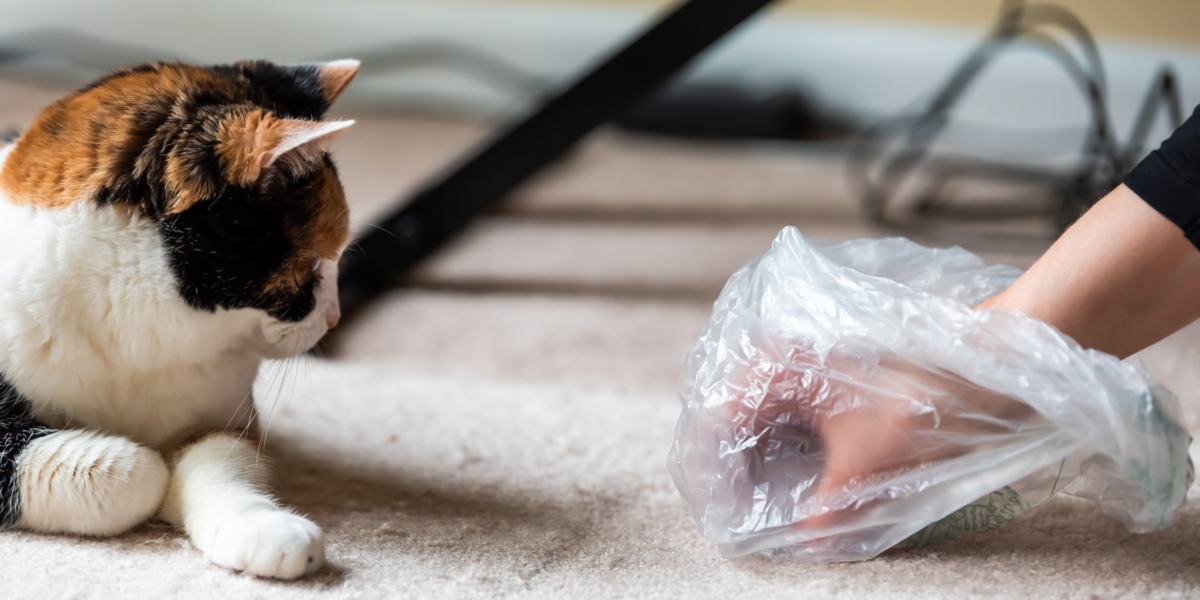The 7 Best Cat Foods For Shedding Control
This page contains affiliate links. We may earn money or products from the companies mentioned in this post through our independently chosen links, which earn us a commission. Learn More
The best cat food for shedding is a highly digestible, species-appropriate food that helps to keep your cat’s digestion running smoothly and includes vital minerals, vitamins, and essential fatty acids to support healthy skin and a vibrant coat.
We recommend Ziwi Peak Mackerel Recipe Canned Cat Food as the overall best cat food for shedding. It’s a carnivore’s dream packed with species-appropriate nutrition and free from added carbohydrates, by-products and artificial additives. With mackerel as the main ingredient, it’s loaded with omega fatty acids and natural fish flavor your cat will love.
As much as we love this Ziwi Peak recipe, we know it isn’t the perfect pick for every cat, so stay tuned to see our other recommendations for the best cat food for shedding.
At A Glance: Best Cat Foods For Shedding Control To Buy
Before we get into the details of what causes excessive shedding and how you control it, we highly recommend looking at the comparison table we have below where we highlighted the features of each of our top picks. You’ll also find more detailed information about each product later in the article.
Compare Best Cat Foods For Shedding
|
Runner Up
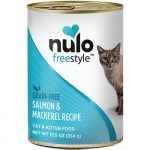
2. Nulo Freestyle Salmon & Mackerel Recipe Grain-Free Canned Cat & Kitten Food |
Budget Pick
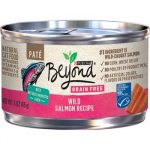
3. Purina Beyond Grain-Free Wild Salmon Pate Recipe Canned Cat Food |
Best for Sensitive Stomach
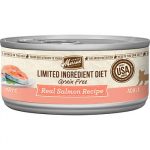
5. Merrick Limited Ingredient Diet Grain-Free Salmon Canned Food |
Best Dry Food
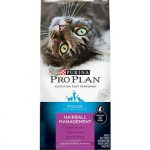
6. Purina Pro Plan Focus Adult Hairball Management Chicken & Rice Formula Dry Cat Food |
Best for Hairball Control
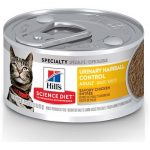
7. Hill’s Science Diet Adult Urinary Hairball Control Savory Chicken Entrée |
||
|
Protein
12.0% min |
Protein
11.0% min |
Protein
10.0% min |
Protein
40% |
Protein
8.0% |
Protein
40% |
Protein
7.0% |
|
Fat
3.0% min |
Fat
5.5% min |
Fat
5.0% min |
Fat
17% |
Fat
7.0% |
Fat
16% |
Fat
3.5% |
|
Fiber
2.0% max |
Fiber
0.75% max |
Fiber
1.50% max |
Fiber
4.0% |
Fiber
1.4% |
Fiber
5.5% |
Fiber
1.5% |
|
Life Stage
Adult |
Life Stage
Adult |
Life Stage
Adult |
Life Stage
Adult |
Life Stage
Adult |
Life Stage
Adult |
Life Stage
Adult |
|
Type
Wet |
Type
Wet |
Type
Wet |
Type
Dry |
Type
Wet |
Type
Dry |
Type
Wet |
|
Made In
New Zealand |
Made In
United States |
Made In
United States |
Made In
United States |
Made In
United States |
Made In
United States |
Made In
United States |
What Causes Excessive Shedding?
Shedding is normal for cats. You’re bound to find balls of hair collecting in the corners of the room, under your appliances, and on your furniture. There’s no escaping it (unless, of course, you have a hairless cat like the Sphynx).
While shedding is to be expected in a cat-inclusive household, there’s a difference between normal and excessive shedding. But how do you tell the difference?
Most cats shed continuously, so regular grooming can help keep all that shed hair from clogging your vacuum and covering your clothing. Some cats also shed more heavily at certain times of year or during periods of stress. If your cat loses so much hair that he starts to develop patches of hair loss on his coat or you notice changes in his skin, it may be time to visit the veterinarian.
Abnormal hair loss is known as alopecia in both people and pets.
According to Dr. Alison Diesel, a clinical associate professor at the Texas A&M College of Veterinary Medicine & Biomedical Sciences, “The biggest difference between normal shedding and alopecia in cats is that with normal shedding, there is not appreciable hair loss on the animal.” With normal shedding, you’ll find hairballs and tufts of hair around the home, but your cat’s coat will still look normal at a glance in terms of length, thickness, and density.
Feline alopecia has many potential causes ranging from external parasites like fleas and mites to internal infections and food allergies. Cats can also inherit genetic forms of alopecia (again, think about the hairless Sphynx breed) and some breeds become more prone to hair loss as they age.
If you notice your cat seems to be shedding more than usual, look for additional symptoms like itching, scratching, or excessive grooming that might point to an underlying health problem.
What About Dietary Factors?
The quality of your cat’s diet is directly related to his health and wellness, both in the short- and long-term. A poor-quality diet made up of animal by-products, low-value carbohydrates, and artificial additives won’t provide the essential nutrients your cat needs for a healthy coat, let alone overall health. Improving the quality of your cat’s diet could very well improve the quality of his coat.
Some of the nutrients that play an important role in your cat’s coat quality include:
- Protein – About 95% of the structure of your cat’s hair is made up of protein, so adequate protein intake is essential for a healthy coat. Minimum protein recommendations for adult cats are 26% according to the Merck Veterinary Manual, but cats with skin and coat issues can benefit from higher protein levels between 30% and 45%.
- Omega Fatty Acids – In moderation, omega-3 and omega-6 fatty acids are great for your cat’s skin and coat. Fish and fish oil are optimal sources for these fatty acids, so opt for fish-based recipes when possible or consider adding a fish oil supplement to your cat’s diet.
- Vitamins – A balanced diet is essential for healthy skin and coat, but certain vitamins play a particularly important role in hair growth. These include vitamin A, B vitamins, vitamin C, vitamin D, and vitamin E. Make sure you choose a nutritionally complete cat food formula to ensure your cat gets the minimum recommended amount for these nutrients.
- Minerals – Two of the most important minerals for healthy hair include iron and zinc. A cat food formulated in keeping with AAFCO’s nutrient profiles will contain the bare minimum for these nutrients, but it doesn’t hurt to add a little extra. Red meat, poultry, and oysters are rich animal sources of zinc and iron while whole grains, leafy greens, and legumes are plant-based sources.
In addition to these nutrients, a skin- and coat-supporting diet for cats is rich in moisture. Hydration is just as important for cats as it is for people, but cats tend not to drink a lot of water on their own. Choosing a fresh or canned food diet can help increase your cat’s moisture intake. You might also consider investing in a cat water fountain to provide your cat with fresh, constantly cycling water which might be more appealing than stagnant water from a bowl.
How To Choose The Best Cat Food For Shedding?
Before you make any significant changes to your cat’s diet, it’s a good idea to consult your veterinarian. If shedding is a concern, talk to your vet about whether your cat’s shedding is normal or excessive. In the event that your cat’s shedding is caused by some underlying condition, your vet can help you determine the best course of treatment which may not require a change in diet.
If your veterinarian is concerned that your cat’s diet might be the cause of excessive shedding, there are certain things you should look for in a new diet.
Here are some features of the best cat food for shedding:
- High-quality ingredients – The higher the quality of the ingredients in your cat’s food, the more digestible it will be and the better his body will be able to absorb the nutrition they deliver.
- Rich in animal protein – Cats are obligate carnivores, so they require a meat-based diet with the majority of the nutrition coming from animal-based ingredients.
- Moderate fat content – Fat provides a concentrated source of energy for cats along with all those skin- and coat-supporting omega fatty acids, but you want to avoid products where the fat content is too high because it could cause your cat to gain unwanted weight.
- Nutritional supplements – Most commercial cat foods contain added vitamin and mineral supplements to ensure complete and balanced nutrition. Just make sure the list of supplements isn’t excessive – a long list of supplements suggests the main ingredients are low in quality.
- High in moisture – Proper hydration is essential for smooth digestion and overall wellness, so consider choosing a canned food or fresh food diet for your cat.
When shopping for cat food to reduce shedding, you may come across prescription diets for skin and coat support or hairball control. These foods are often supplemented with skin- and coat-supporting nutrients, but you should exercise the same degree of caution in evaluating these products as you would any other.
Many prescription diets utilize by-products and low-value carbohydrates as main ingredients which could make matters worse in terms of improving the quality of your cat’s diet.
Our Top Picks For The Best Cat Foods For Shedding
Now that you have a better understanding of what causes excessive shedding in cats, you can see how making improvements to your cat’s diet might help resolve the issue. Below you’ll find a compilation of our favorite cat foods that are packed with animal protein and moisture, rich in omega fatty acids, and nutritionally balanced for cats of all breeds.
Here are our top picks for the best cat foods for shedding you should consider:
Ziwi Peak Mackerel Recipe Canned Cat Food
Product Info
- Protein: 12.0% min
- Fat: 3.0% min
- Fiber: 2.0% max
- Life Stage: Adult
- Type: Wet
- Made In: New Zealand
Guaranteed Analysis

Dry Matter Basis

- Rich in omega-3 and omega-6 fatty acids
- Packed with animal protein from wild-caught mackerel
- High in moisture, low in carbohydrates
- Free from grains, fillers, and artificial additives
- Fairly expensive compared to other options
- Limited number of customer reviews
In addition to its omega fatty acid content, this recipe is rich in moisture and completely free from grains, fillers, and artificial additives. It is supplemented with essential vitamins and chelated minerals to ensure complete and balanced nutrition for your cat.
This mackerel-based canned food formula is also supplemented with New Zealand green mussels which are naturally rich in joint-supporting glucosamine and chondroitin.
Overall, this is a species-appropriate, fish-based diet rich in animal protein with moderate fat and low carbohydrate content.
Nulo Freestyle Salmon & Mackerel Recipe Grain-Free Canned Cat & Kitten Food
Product Info
- Protein: 11.0% min
- Fat: 5.5% min
- Fiber: 0.75% max
- Life Stage: Adult
- Type: Wet
- Made In: United States
Guaranteed Analysis

Dry Matter Basis

- Several sources of animal-based protein
- Rich in omega-3 fatty acids from fish ingredients
- Limited added carbohydrate ingredients
- No artificial additives, fillers, or grains
- Fairly expensive compared to other options
- Limited number of customer reviews
This canned food formula contains numerous sources of animal-based protein with a limited number of added carbohydrates. Things like cranberries and pumpkin don’t appear until the 13th slot on the ingredients list, so they likely don’t contribute significantly to the overall composition of the product. They do, however, contribute a small amount of natural vitamin and mineral content.
Overall, this is a species-appropriate, fish-based canned food recipe rich in omega-3 fatty acids with limited carbohydrate content and no artificial additives.
Purina Beyond Grain-Free Wild Salmon Pate Recipe Canned Cat Food
Product Info
- Protein: 10.0% min
- Fat: 5.0% min
- Fiber: 1.50% max
- Life Stage: Adult
- Type: Wet
- Made In: United States
Guaranteed Analysis

Dry Matter Basis

- Fresh salmon as the first ingredient
- Limited list of ingredients
- Rich in omega-3 fatty acids from salmon
- Canned food, rich in moisture
- Contains an unspecific ingredient (liver)
- Higher than average carbohydrate content for a wet food
This canned food recipe from Purina features fresh salmon and chicken as the top two ingredients with supplemental protein from liver and eggs. Because salmon is so rich in omega-3 fatty acids, this formula doesn’t require the addition of an added source of fat, though it probably wouldn’t hurt.
We appreciate that this recipe is highly affordable and that it still offers a limited list of ingredients. We’d prefer to see a named source of liver and could probably do without the carrots and inulin, but overall, this appears to be an animal-based formula rich in moisture and omega fatty acids.
Smalls Fish Kibble Recipe Cat Food
Product Info
- Protein: 40%
- Fat: 17%
- Fiber: 4.0%
- Life Stage: Adult
- Type: Dry
- Made In: United States
Guaranteed Analysis

Dry Matter Basis

- Two sources of animal-based protein as main ingredients
- Affordably priced, delivered to your door
- Rich in natural omega-3 fatty acids for healthy skin/coat
- Higher than average carbohydrate content
- Requires a subscription, somewhat expensive
- Recent issues with Smalls’ customer service
This kibble formula features fresh whitefish and whitefish meal as the top two ingredients, making it a concentrated source of fish-based animal protein and omega fatty acids. Aside from these two ingredients, this formula really only contains a handful of others – sweet potatoes and peas are the primary carbohydrates while pea protein provides additional protein and fish oil adds healthy fats.
Because this is one of Smalls’ most affordable recipes, we’re not surprised to see that it contains a little plant-based protein and a generic source of fat. Tweaking these ingredients would significantly increase the quality of this formula but it is already a decent option if you’re looking to have cat food delivered.
We’d also like to note that Smalls has been the subject of some consumer complaints lately. The company is making changes to their customer experience, but progress has been a little slow.
Merrick Limited Ingredient Diet Grain-Free Salmon Canned Food
Product Info
- Protein: 8.0%
- Fat: 7.0%
- Fiber: 1.4%
- Life Stage: Adult
- Type: Wet
- Made In: United States
Guaranteed Analysis

Dry Matter Basis

- Deboned salmon as the main ingredient, single source of protein
- Limited number of added carbohydrate ingredients
- Natural sources of omega-3 and omega-6 fatty acids
- Rich in moisture to support hydration and digestion
- Contains some concentrated plant protein
- Higher than average carb content for a wet food
This limited ingredient formula from Merrick features deboned salmon as a single source of animal protein and a natural source of omega-3 fatty acids. As a canned food, this formula is rich in moisture and lower in carbohydrates than the average dry food.
In addition to the natural omega-3 fatty acids that come from the salmon, this recipe contains flaxseed oil as a balancing source of omega-6 fatty acids.
Overall, this is a salmon-based canned food formula rich in moisture and omega-3 fatty acids, supplemented with essential vitamins and minerals for balanced nutrition.
Purina Pro Plan Focus Adult Hairball Management Chicken & Rice Formula Dry Cat Food
Product Info
- Protein: 40%
- Fat: 16%
- Fiber: 5.5%
- Life Stage: Adult
- Type: Dry
- Made In: United States
Guaranteed Analysis

Dry Matter Basis

- Fresh chicken as the primary ingredient
- Formulated for hairball management
- Positive customer reviews
- Fairly high in carbohydrates
- Contains corn, wheat, and soy ingredients
- Doesn’t contain the moisture your cat needs
While this formula leaves something to be desired in terms of the list of ingredients, it has a number of positive reviews from customers who claim it worked to reduce their cat’s hairballs. Cats who shed excessively often struggle with hairballs and a formula that promotes regular digestion while supporting skin and coat health could help.
Hill’s Science Diet Adult Urinary Hairball Control Savory Chicken Entrée
Product Info
- Protein: 7.0%
- Fat: 3.5%
- Fiber: 1.5%
- Life Stage: Adult
- Type: Wet
- Made In: United States
Guaranteed Analysis

Dry Matter Basis

- Fresh chicken and turkey as the main protein sources
- Fish oil for omega-3 fatty acids
- Formulated for hairball control, positive customer reviews
- Higher carbohydrate content than average canned food
- Contains corn and soy ingredients
- Made with some animal by-products
This canned food formula features fresh chicken and turkey giblets as the primary ingredients with pork by-products and pork liver as supplemental proteins. You’ll also find fish meal on the list as a supplementary source of protein, though its omega fatty acid content may be more limited than fresh fish would.
Overall, this recipe seems to be a popular choice among pet owners whose cats struggle with hairballs and we do like the higher moisture content compared to the previous recipe.
Final Thoughts
Unless you have a hairless cat, you’ll never stop your cat from shedding. Shedding is simply part of the natural cycle of hair growth, and it will happen continuously throughout your cat’s life.
Regular grooming is a simple way to control how much of your cat’s hair ends up on the furniture or on your clothes, but if shedding continues to be a problem you may want to take a second look at your cat’s diet. Upping the protein and omega fatty acid content of your cat’s diet might improve his skin and coat health which could very well affect his level of shedding.
Take what you’ve learned here to your veterinarian to discuss whether a change of diet might benefit your cat.

